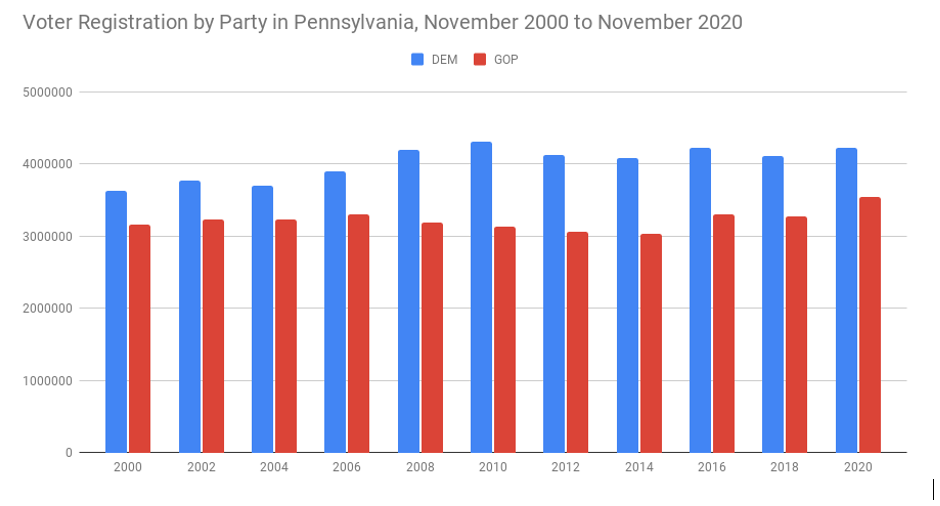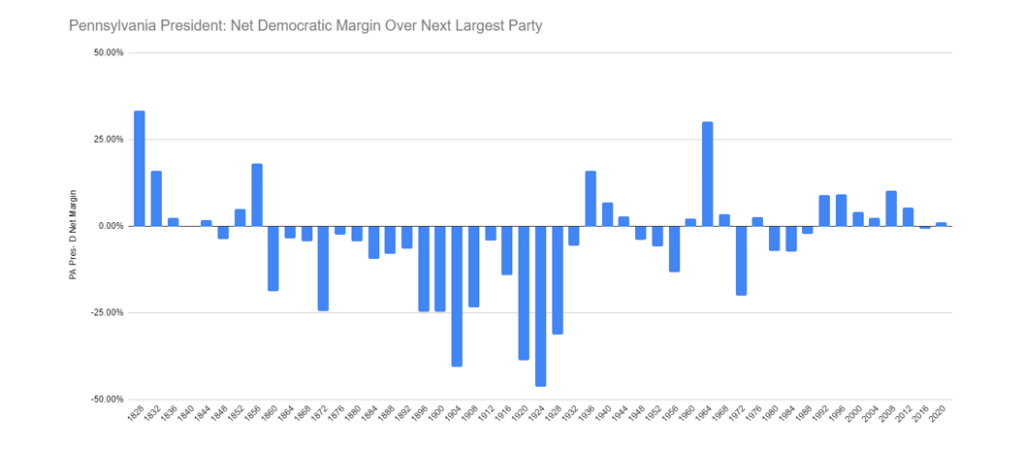I wanted to write something about the prospects of the Republican and Democratic Parties, at least in the immediate future, but on a national scale, I am throwing my hands in the air here. President Trump lost re-election with the same electorate that delivered more state legislative seats and Congressional seats than the midterm. President Trump would lose the popular vote by seven million, lost Pennsylvania, Michigan, Wisconsin, Georgia, Nebraska’s Second District, and Arizona, and Democrats picked off four Senate seats. The 2018 cycle saw House Democratic candidates earn almost ten million more votes than their Republican counterparts, and with that, swung control of the body. Two years later, with thirty-eight million more voters participating, their total vote edge was halved- and Republicans came within five seats of retaking the majority.
Ok, maybe mining 2020 (which everyone will try to do anyway) for clues about 2022 and beyond is a bit silly, at least nationally.
Let us zoom in a bit onto my favorite Commonwealth, Pennsylvania. Surely there is a clear edge for the Democratic party, right? Afterall, President Trump lost the state by just under 81,000. That’s a big swing from his 40,000 vote win in 2016!
Indeed, it is a swing, and one that put Biden over the top, by our projections, on November 6th. It was a big deal. So, clearly, the Democrats are in the driver’s seat.
But the Democratic registered voter edge in the state has collapsed, halving from a high of roughly 1.23 million in November of 2008 to just 614,000 as of last week.

That is a great hidden sign for the Republicans, and if it continues then they’ll finish ahead.
But the population growth in Pennsylvania is occurring mainly in counties that voted for Biden like Chester and Montgomery, and are more racially diverse, like suburban Philadelphia. That correlates with Biden’s strong performance, so, Democrats are in the driver’s seat.
But Joe Biden’s victory in Pennsylvania was the thinnest by percentage margin since…well…ever, for a Democratic candidate. No Democrat, in the near-200-year-history of the party, has performed worse there and still carried the state.

Biden won it by the skin of his teeth: 1.17%. Further, it voted to the right of the country for the second cycle in a row, shifting its PVI into light red territory. That underlying redness is a good sign for the Republicans.
But the Republicans failed to pick up any low-hanging Congressional fruit, losing the competitive 7th, 8th and 17th Districts. The Democrats have made their stand in these and held their own.
But the Democratic incumbents won re-election by just 2.2-3.8%, margins half-as-thin as the most endangered Republican. They’re more exposed, so Republicans should benefit.
But the boundaries will likely change in redistricting, and the Governor and State Supreme Court are going to be a formidable check on the Republican legislature’s intentions. Republicans won’t be able to rely on creative boundaries to bounce back after the Census.
But Congressional Republican candidates improved on their overall vote share. Two years and almost two million more voters participating, they went from a 500,000 vote deficit in 2018 to winning the total statewide vote by 85,000.
But incumbent Senator Pat Toomey is retiring. He must know that statewide Republicans face a major climb in the state, right?
Except Republicans flipped two of the three state row offices in the very same election cycle where their Presidential incumbent lost: State Auditor and State Treasurer.
I think you get the picture here: both parties have bragging rights in the Keystone. Isolating one piece of the election cycle ignores others. So what is my prediction for 2022 and beyond here? Where is it trending? The honest answer?
I don’t know, and this far out, that’s healthy.
Pennsylvania is going to host an incredible Senate election next cycle- a critical one for Republicans to defend, and for Democrats, a prime opportunity to pad their razor-thin majority. As the cycle progresses, we will get more clues as to where things may be headed, but certainty will likely elude us.
If we accept this uncertainty and continue to observe the returns, the polls, the registration data, all of it, over longer spans of time, we could determine actual trends. Partisans can take this collective information to build successful campaigns in states moving their way or threading just enough to defy unfavorable trends. Activists of all stripes can use these longer studies. Voters can better inoculate themselves against campaign nonsense. For the rest of us, we gain a deeper understanding of our ever-changing electorate.
Brandon Finnigan (@B_M_Finnigan) is Director of Elections at Decision Desk HQ.